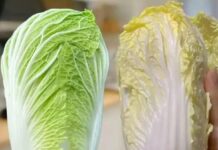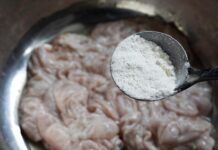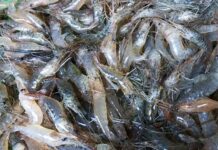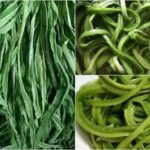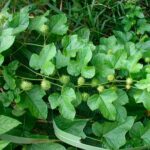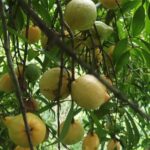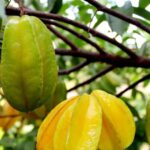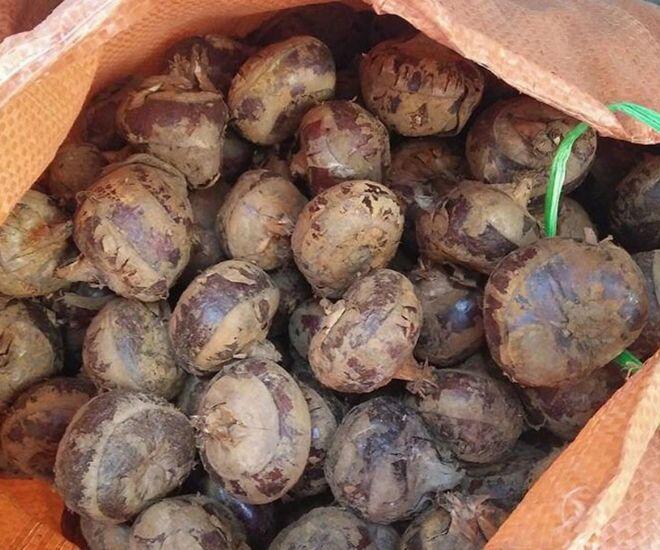
Water chestnuts, or mã thầy in Vietnamese, were once wild aquatic plants that grew abundantly in ponds and waterlogged fields across Vietnam, from the North to the South. The humble water chestnut, a familiar snack for rural folks, has now become an economically valuable crop with a unique culinary appeal.
Water chestnuts are primarily cultivated in the provinces of Cao Bang, Bac Kan, Da Lat (Lam Dong), and Dong Thap Muoi, which have become major production hubs, supplying significant quantities to the market.
The harvesting season for water chestnuts typically occurs towards the end of the year, starting around November and December, and extending over the following months. Depending on the regional climate and soil conditions, the timing may vary slightly.
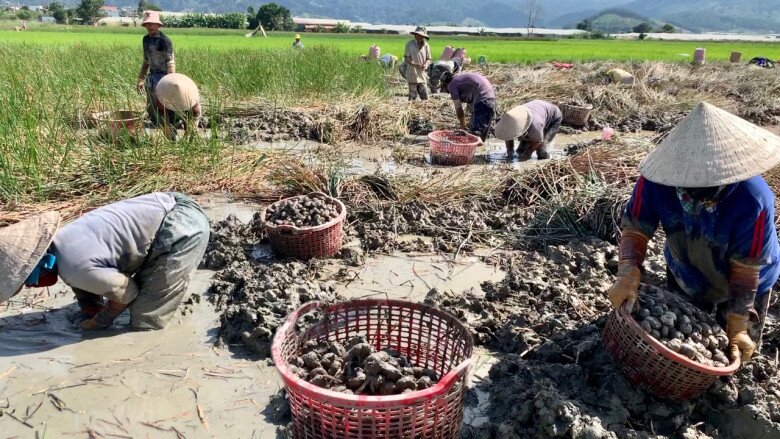
The versatility of water chestnuts in culinary applications is their most enticing feature. They can be enjoyed fresh after peeling, offering a crisp, sweet, and refreshing taste with a distinctive aroma reminiscent of jicama but with a more refined flavor. This makes it an ideal choice for beating the heat during sweltering summer days.
Beyond their raw consumption, water chestnuts are incredibly versatile ingredients in a myriad of dishes. They are commonly used in sweet soups (chè), creating delightful desserts with a delicate balance of sweetness and coolness. The starchy texture of water chestnuts makes them perfect for making tapioca pearls, resulting in a chewy, slightly crunchy bite with a natural hint of sweetness that enhances the appeal of the dessert.
Additionally, water chestnuts are used in savory preparations, such as soups and stews, imparting a subtle natural sweetness to the broth and adding depth of flavor without the need for excessive seasoning. This versatility has firmly established water chestnuts as a staple in Vietnamese cuisine, especially in summer dishes aimed at cooling and refreshing the body.

To meet market demands and consumer convenience, peeled water chestnuts are often vacuum-packed. This method not only prolongs the shelf life of the product but also facilitates transportation across provinces. Currently, the market price for water chestnuts ranges from VND 35,000 to 50,000 per kilogram for unpeeled ones. The price can go up to VND 80,000 per kilogram for peeled water chestnuts due to the labor-intensive process of cleaning and peeling.
Water chestnuts are not just a delicious treat but also earn the moniker “nature’s precious gift” due to their nutritional value and medicinal properties. According to the book “Vietnamese Medicinal Plants and Herbs” by Professor and Doctor Do Tat Loi, water chestnuts are not only nutritious and cooling but also hold a place in traditional medicine for treating various ailments. Specifically, they are used to support the treatment of diabetes, liver disorders such as jaundice, and heat-related conditions like dysentery with bloody stools, constipation, and inflamed eyes.
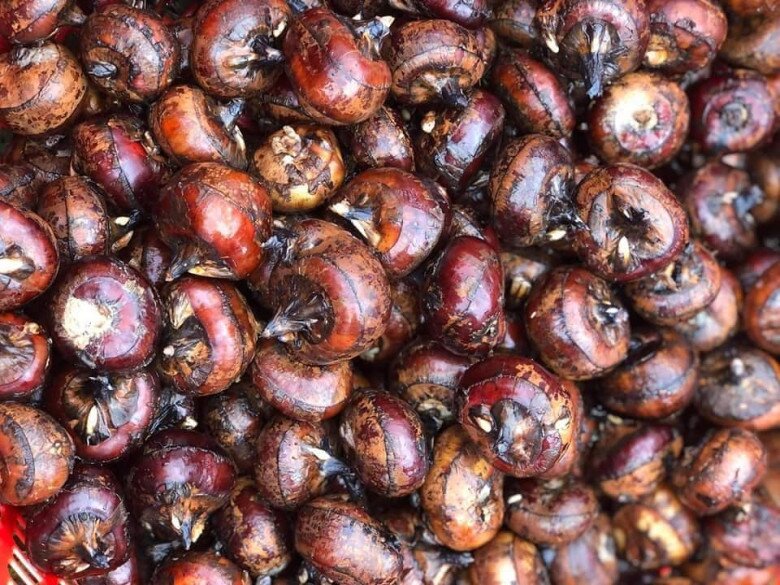
However, as with all natural foods and herbal remedies, the consumption of water chestnuts should be approached with certain considerations. Individuals with deficient spleen and kidney qi, as well as children with bedwetting issues, are advised against consuming water chestnuts. Moreover, since water chestnuts grow in muddy environments, their outer skin can harbor parasitic larvae. Therefore, it is imperative to thoroughly clean and blanch the chestnuts in boiling water before peeling and consuming them raw to ensure food safety and protect consumers’ health.
From their humble beginnings in ponds and fields, these “under-the-earth” tubers have embarked on a journey to captivate even the most discerning palates while significantly contributing to local economic development.
The Magic of Perilla Leaf Water: A Tonic with Many Benefits, But Beware of These 3 Pitfalls
Introducing the ultimate health tonic – perilla leaf water. A traditional remedy with a modern twist, this powerful elixir is packed with nutrients and antioxidants that boost your health and vitality. But many are still unaware of its full potential and how to unlock its benefits. Discover the secrets to harnessing the power of perilla leaf water and take your wellness to new heights.
“Wild Weed, Once a Humble Fence, Now a City Favorite: A Tasty and Healthy Treat.”
Introducing a plant with a unique flavor profile and an impressive array of health benefits. This humble herb boasts a calming effect on the mind and body, offering natural relief from stress and anxiety. Its cooling properties provide a refreshing escape from the heat, while its sleep-supportive qualities ensure a restful night’s slumber. With its multitude of advantages, this plant is a true superstar in the world of wellness.
The Forgotten Wild Fruit: From Neglect to Summer Delicacy, City Dwellers Drive Up Demand with a Price Tag of 180,000 VND/kg
This forest berry has a unique sweet and sour taste, perfect for those who enjoy a tangy twist. It is a versatile fruit that can be enjoyed fresh or used as an ingredient in sour soups and fish dishes. For those who wish to enjoy this fruit all year round, many online vendors also offer dried versions, ensuring a tasty treat whenever desired.
“Attract Wealth with the Carambola Tree: A Golden Opportunity for Prosperity”
“The humble carambola, or star fruit tree, is not just a pretty addition to your garden, but a versatile plant with a multitude of uses. This unique tree provides an abundance of benefits, from its delicious, tangy fruit to its medicinal properties and ability to enhance the feng shui of your home. With its vibrant, eye-catching shape and flavor, the carambola is a true superstar among fruit trees, offering a wealth of advantages that will elevate your health, your home, and your taste buds.”












